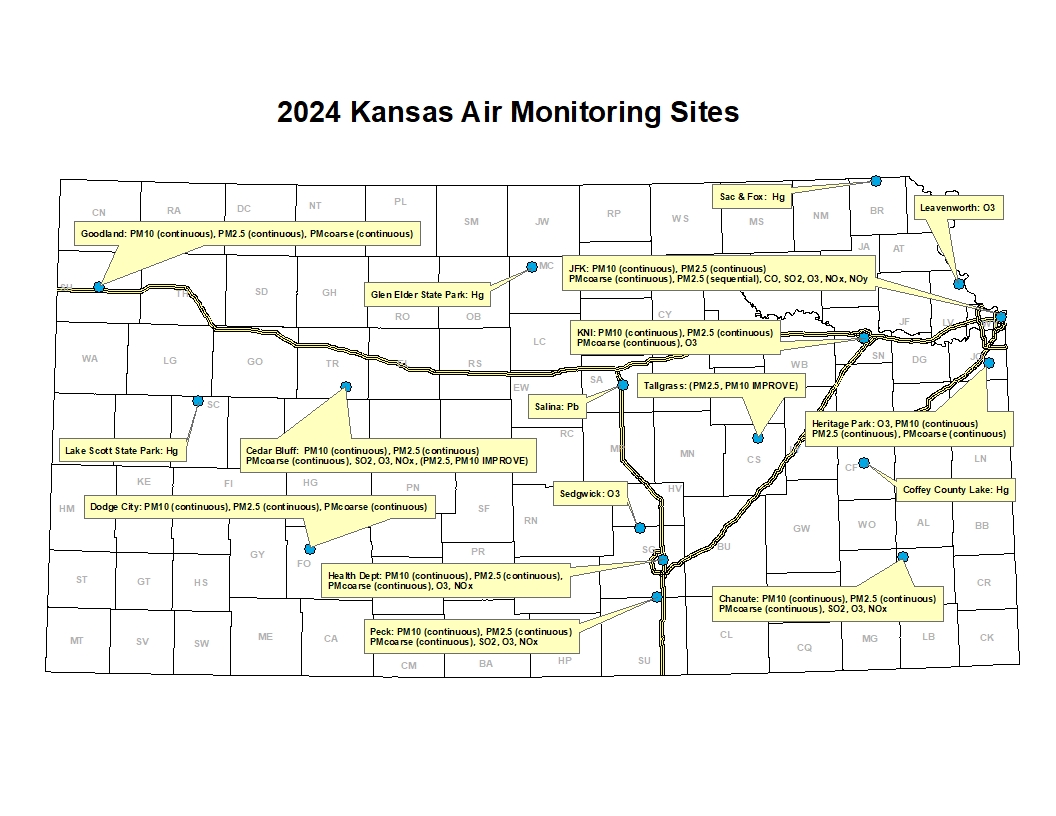Environment
Air Quality
Smoke from prescribed burning adds ozone precursors and particulate matter to the air. In the presence of sunlight, ozone precursors change to ozone. Unlike ozone high in the atmosphere, low level ozone creates undesirable air quality. Particulate matter settles out onto surfaces and into lungs, where it can cause health issues. Ozone and particulate matter can both affect visibility by creating haze. Improving air quality is the primary goal of the Kansas Flint Hills Smoke Management Plan.
- Air quality standards
- Fire and Smoke - EPA
- Air Now - EPA
- Air quality forecast – NOAA
- Air quality monitoring system - KDHE
- Consequences of air quality non attainment – Ref. Section 2.4 in SMP (PDF)
- Exceptional Events Guidance Memorandum- (PDF)
- Guidance on the Preparation of Exceptional Events Demonstrations for Wildfire Events that May Influence Ozone Concentrations- (PDF)
- Nebraska Department of Air Quality
Click image for full size map
Weather
Weather conditions have a tremendous influence on fire safely and the dispersal and transport of smoke. Weather forecasts and models can be used to select burn times that minimize the risk of smoke causing air quality issues.
- NWS fire weather (choose location)
Topeka | Wichita | Kansas City, Kansas - Mixing height, transport wind, and category day - KDHE - (PDF)
- Drought Monitoring index
